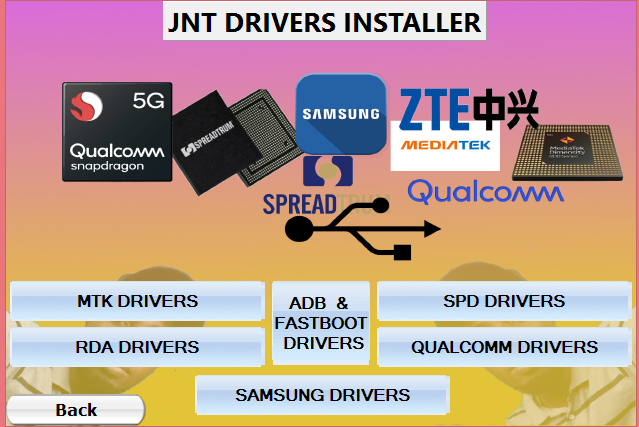Always there is high interdependence between mobile software and mobile hardware, mobile software is the one which provides support to the mobile hardware to function. For example, when you touch a screen of smart phone, that is hardware action but the response of the phone to open what you'd touch is software action, this is because the mobile operating system is designed with different software elements to manage and help in operation process of a phone.
1. Android OS (Google Inc.)
The Android mobile operating system is Google's open and free software stack that includes an operating system, middleware and also key applications for use on mobile devices, including smartphones. Updates for the open source Android mobile operating system have been developed under "dessert-inspired" version names (Cupcake, Donut, Eclair, Gingerbread, Honeycomb, Ice Cream Sandwich) with each new version arriving in alphabetical order with new enhancements and improvements.
2. Bada (Samsung Electronics)
Bada is a proprietary Samsung mobile OS that was first launched in 2010. The Samsung Wave was the first smartphone to use this mobile OS. Bada provides mobile features such as multipoint-touch, 3D graphics and of course, application downloads and installation.
Did You Know…? In the computer industry, proprietary is the opposite of open. A proprietary design or technique is one that is owned by a company. It also implies that the company has not divulged specifications that would allow other companies to duplicate the product.
3. BlackBerry OS (Research In Motion)
The BlackBerry OS is a proprietary mobile operating system developed by Research In Motion for use on the company’s popular BlackBerry handheld devices. The BlackBerry platform is popular with corporate users as it offers synchronization with Microsoft Exchange, Lotus Domino, Novell GroupWise email and other business software, when used with the BlackBerry Enterprise Server.
4. iPhone OS / iOS (Apple)
Apple's iPhone OS was originally developed for use on its iPhone devices. Now, the mobile operating system is referred to as iOS and is supported on a number of Apple devices including the iPhone, iPad, iPad 2 and iPod Touch. The iOS mobile operating system is available only on Apple's own manufactured devices as the company does not license the OS for third-party hardware. Apple iOS is derived from Apple's Mac OS X operating system.
Editor’s Pick: Need help understanding Apple mobile devices? Webopedia’s “iPhone, iPhone 3G, and iPhone 3G S - What's The Difference?” article will get you get started.
5. MeeGo OS (Nokia and Intel)
A joint open source mobile operating system which is the result of merging two products based on open source technologies: Maemo (Nokia) and Moblin (Intel). MeeGo is a mobile OS designed to work on a number of devices including smartphones, netbooks, tablets, in-vehicle information systems and various devices using Intel Atom and ARMv7 architectures.
6. Palm OS (Garnet OS)
The Palm OS is a proprietary mobile operating system (PDA operating system) that was originally released in 1996 on the Pilot 1000 handheld. Newer versions of the Palm OS have added support for expansion ports, new processors, external memory cards, improved security and support for ARM processors and smartphones. Palm OS 5 was extended to provide support for a broad range of screen resolutions, wireless connections and enhanced multimedia capabilities and is called Garnet OS.
7. Symbian OS (Nokia)
Symbian is a mobile operating system (OS) targeted at mobile phones that offers a high-level of integration with communication and personal information management (PIM) functionality. Symbian OS combines middleware with wireless communications through an integrated mailbox and the integration of Java and PIM functionality (agenda and contacts). Nokia has made the Symbian platform available under an alternative, open and direct model, to work with some OEMs and the small community of platform development collaborators. Nokia does not maintain Symbian as an open source development project.
8. webOS (Palm/HP)
WebOS is a mobile operating system that runs on the Linux kernel. WebOS was initially developed by Palm as the successor to its Palm OS mobile operating system. It is a proprietary Mobile OS which was eventually acquired by HP and now referred to as webOS (lower-case w) in HP literature. HP uses webOS in a number of devices including several smartphones and HP TouchPads. HP has pushed its webOS into the enterprise mobile market by focusing on improving security features and management with the release of webOS 3.x. HP has also announced plans for a version of webOS to run within the Microsoft Windows operating system and to be installed on all HP desktop and notebook computers in 2012.
9. Windows Mobile (Windows Phone)
Windows Mobile is Microsoft's mobile operating system used in smartphones and mobile devices – with or without touchscreens. The Mobile OS is based on the Windows CE 5.2 kernel. In 2010 Microsoft announced a new smartphone platform called Windows Phone 7.
Did You Know...? According to data from the International Data Corporation (IDC), the worldwide smartphone market grew 1.1 percent year over year in 2016. Android dominated the market with 86.8% share in 2016Q3, followed by iOS at 12.5%, and Windows phone at 0.3%.
***THANK YOU***
" I made the article for the benefit of me and fellow in the understang different issues of mobile phone's software and to become aware about the problems and actions happens in our mobile phones we use in our daily life, this is part of the introducton to mobile software articles, dont stay away from my blog to get another series of the articles relating to mobile software technology"
written by juma m. selemani, founder of jnt mobile software blog and pages
contact: 0713 013 927,
jntmobilesoftware@gmail.com
jumaselemani20@gmail.com














![ITEL A60 (A662L) FRP REMOVE FILE DOWNLOAD [A662L FDL]](https://blogger.googleusercontent.com/img/b/R29vZ2xl/AVvXsEiFbT8D8jS-OzP_EBv8z_KHso1MzdWxtJvtRaVqSor9SF5JfUhRuwU-mjcfaZ5Wzux6__FOgKkkmjotu8qQ41TFyFC2taOuStf3hbg1fEQV9GN6v4HRbZOwsnXdFewh2N3lif4Te8TFz_rhIWMi97lP0cosf3uQQVqkbPnBDLGr69e9Wx6bw9Vkh5K5JA/s72-w331-c-h400/Itel%20A60%20(A662L)%20frp%20remove%20file.jpg)



No comments:
Post a Comment